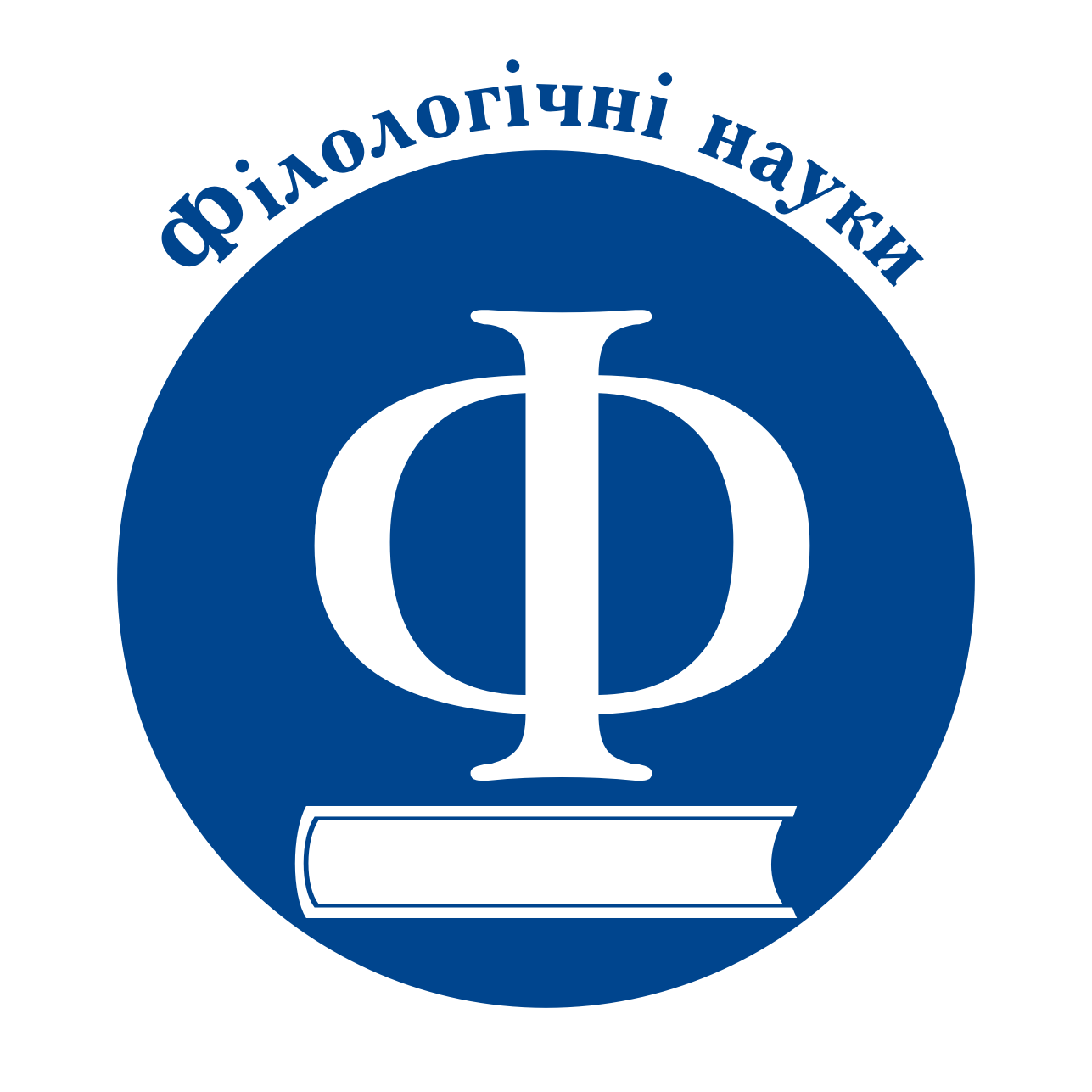THE SELF AS THE OTHER: EXISTENTIAL PROJECTIONS OF IDENTITY IN PHILIP ROTH’S NOVEL “THE HUMAN STAIN”
Published 2024-12-30
Keywords
- Філіп Рот, екзистенція, ідентичність, інакшість, жанр, поетика, інтертекст, метатекст
- Philip Roth, existence, identity, otherness, genre, poetics, intertext, metatext
Abstract
One of the main vectors of the creative evolution of the outstanding American prose writer Philip Roth is the study of identity problems. From the novella “Goodbye, Columbus” (1959) to the novel “Nemesis” (2010), the author’s increasing attention to a comprehensive understanding of otherness and identity in key aspects of cultural and existential diversity is obviously traced. A milestone in this regard is the novel “The Human Stain” (2000), in which the main character’s way from “betrayal” of his racial origin to the discovery and comprehension of limitless possibilities for individual development appears as a kind of quest for self-affirmation. The purpose of the study is to reveal, through the analysis of the issues and poetics of Ph. Roth’s novel “The Human Stain”, the artistic and aesthetic originality of the formulation of existential problems of identity in the context of philosophical and psychological studies of otherness. Research methodology. The analysis of the novel “The Human Stain”, given its ideological and content multifacetedness, requires the use of a complex methodology. In the philosophical plane, the most significant basis for us was P. Ricoeur’s work “Oneself as Another”. Among the approaches of literary criticism, we use the latest achievements of the narratological method, strategies of reader-response criticism, and the new historicism approach. As a result of the analysis, it was revealed that the basis of the problematic and thematic complex of the novel “The Human Stain” is the ambivalent concepts of identity and selfness, individualism and decency, freedom and arbitrariness. This complex is organically embodied in the nonlinear plot and compositional organization of the work and the complicated narrative structure. Conclusions. The ideas and poetics features of the novel “The Human Stain” give reason to consider this work a profound and unique fictional study of the problems of otherness in modern society, individual’s searching for ways to affirm identity not only in the ethnical, cultural, social and psychological dimensions, but also in the perspective of ontological and existential self-identity.
References
- Денисова Т.Н. Нагорода знайшла достойного. Живий класик американської літератури Філіп Рот став лауреатом Міжнародної Букерівської премії. URL: http://litakcent.com/2011/07/11/u-poshukahvtrachenoho-ja/
- Калужина О.В. Творчість Філіпа Рота у контексті американської єврейської літератури другої половини ХХ століття : автореф. дис. ... канд. філол. наук : 10.01.04. Сімферополь, 2013. 20 с.
- Кеба О.В., Чорноконь В.В. Поетика невизначеності: від модернізму до постмодернізму і далі : монографія. Кам’янець-Подільський : Ковальчук О.В., 2024. 212 с.
- Кеба О.В. Міфологічний інтертекст у романі Філіпа Рота «Людське тавро». Міф у художній свідомості та культурі ХХ ст. (ІІ Мішуковські читання) : матеріали МНК, м. Херсон, 13–14 жовтня 2017 р. Херсон : Гельветика, 2017. С. 31–35.
- Лісевич В.В. Проблема авторської свідомості в романі Філіпа Рота «Людське тавро». Наукові праці Кам’янець-Подільського національного університету імені Івана Огієнка : збірник за підсумками звітної наукової конференції викладачів, докторантів і аспірантів : у 3-х т. Вип. 19. Т. 3. Кам’янець-Подільський : Кам’янець-Подільський національний університет імені Івана Огієнка, 2020. С. 7–8.
- Лісевич В.В. Роман Філіпа Рота «Людське тавро» в оцінці сучасного літературознавства. Наукові праці Кам’янець-Подільського національного університету імені Івана Огієнка : Збірник за підсумками звітної наукової конференції викладачів, докторантів і аспірантів : у 3-х т. Вип. 18. Т. 3. Кам’янець-Подільський : Кам’янець-Подільський національний університет імені Івана Огієнка, 2019. С. 9–10.
- О’Доннелл П. Картографія сучасної літератури: гетерогенність чи хаос? Головна течія – гетерогенність – канон у сучасній американській літературі : матеріали III Міжнародної конференції з американської літератури, м. Київ, 3–5 жовтня 2005 р. Київ : Факт, 2006. С. 99–109.
- Рікер П. Сам як інший / пер. з франц. В. Андрушко. Київ : Дух і літера, 2002. 458 с.
- Чуйкова О. Свідомість як знання: феноменологічна і герменевтична інтерпретація онтологічної самості. Філософія освіти. 2005. № 2. С. 143–151.
- Edholm, Roger. The Narrator Who Wasn't There: Philip Roth's The Human Stain and the Discontinuity of Narrating Characters. Narrative. The Ohio State University Press. Volume 26, Number 1, January 2018. Pp. 17–38.
- Hutcheon L. A Poetics of postmodernism. London – New-York : Routledge, 2003. 222 p.
- Hutcheon L. Historiographic Metafiction Parody and the Intertextuality of History. Intertextuality and Contemporary American Fiction. Ed. O'Donnell, P., and Robert Con Davis. Baltimore: Johns Hopkins University Press, 1989. P. 3–32. URL: https://tspace.library.utoronto.ca/bitstream/1807/10252/1/TSpace0167.pdf
- Kakutani, Michiko. Confronting the Failures of a Professor Who Passes. The New York Times. 2000, May 2. URL: https://archive.nytimes.com/www.nytimes.com/library/books/050200roth-book-review.html
- Masiero, Pia. Philip Roth and the Zuckerman Books: The Making of a Storyworld. NJ : Amherst, Cambria Press, 2011. 276 p.
- Moynihan S. Passing into the Present: Contemporary American Fiction of Racial and Gender Passing. Manchester University Press, 2010. 192 p.
- Roth, Philip. An Open Letter to Wikipedia. The Newyorker. 2012. September 6. URL: https://www.newyorker.com/books/page-turner/an-open-letter-to-wikipedia
- Roth, Philip. The Human Stain. Penguin Random House. Vintage Classics, 2019. 361 p.
- Tierney W.G. Interpreting Academic Identities: Reality and Fiction on Campus The Journal of Higher Education, Vol. 73, No. 1, Special Issue: The Faculty in the New Millennium (Jan. – Feb., 2002). P. 161–172.
- Waugh Particia. Metafiction. The theory and Practice of Selfconscious Novel. L., NY : Methuen, 1984. 176 p.

